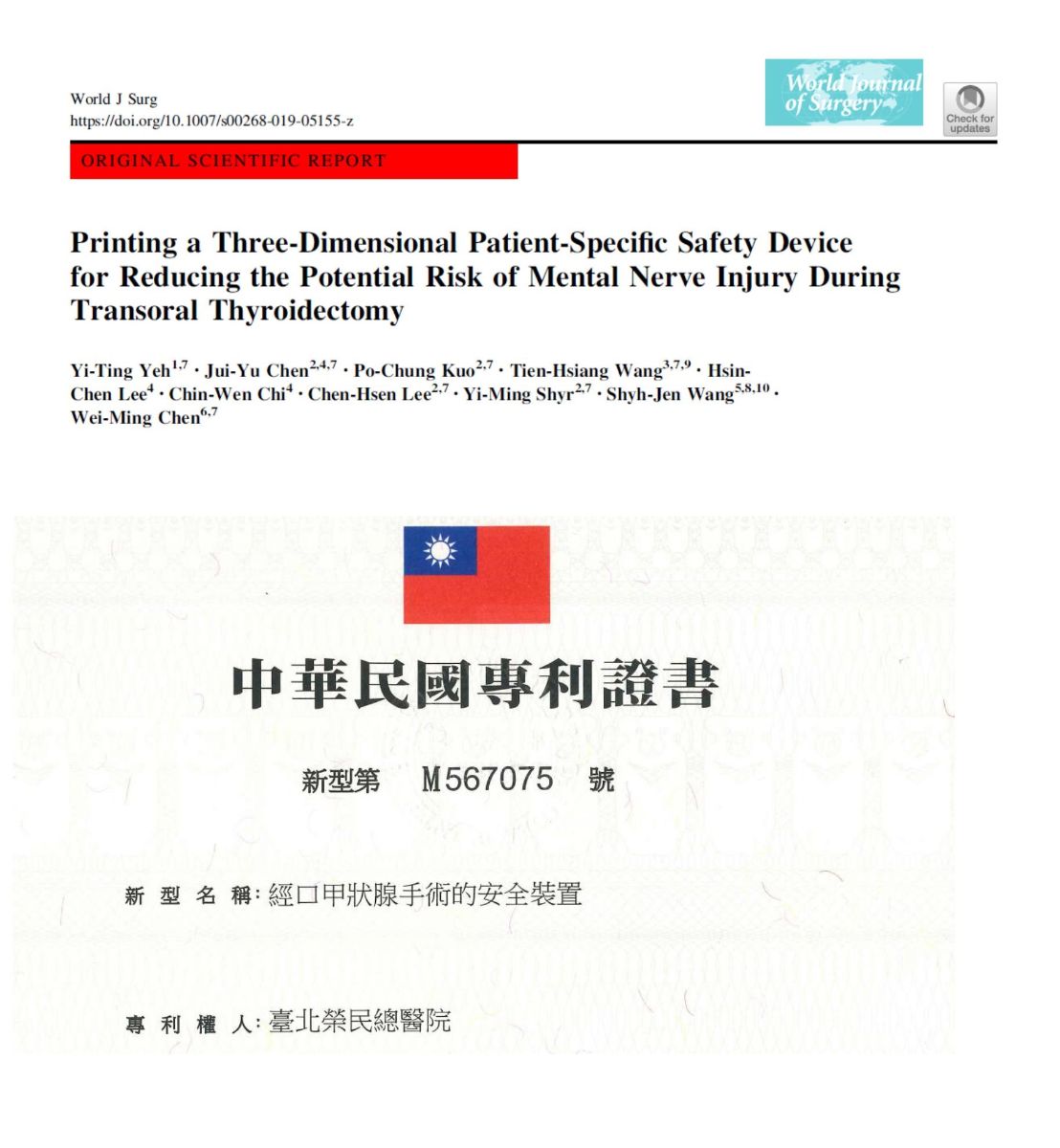3D Printed Patient-Specific Device Significantly Improved Safety in Patient Receiving Transoral Endoscopic Thyroidectomy
More than 52,000 adults are diagnosed of Thyroid cancer in the United States every year. It is the most common cancer in women from twenty to 34 years old. Major treatment involves surgery plus radioactive iodine ablation in certain condition. Traditional thyroidectomy are performed through a one inch transverse incision over the anterior low neck. The scar is apparent especially in patients with keloid-prone skin.
Transoral Endoscopic Approach for Thyroidectomy is an cosmetic appealing surgical technique for treating thyroid cancer. Instead of removing the cancerous thyroid through the incision on the anterior neck, which is obvious, surgeons remove the cancerous thyroid through a small incision in the mouth. No observable scar can be seen after the surgery.
However, this technique is heavily technical dependent. One of the common complication is mental nerve injury, causing low lip parathesia. Patients feel numbess, sometimes pain around the low lip region, impairing quality of life. The rate of mental nerve injury was reported to be as high as 75% in the initial period of robotic-assisted TOETVA.
A recent collaborative study (Printing a Three-Dimensional Patient-Specific Safety Device for Reducing the Potential Risk of Mental Nerve Injury During Transoral Thyroidectomy) conducted by the Department of Surgery and 3D Printing Center at Taipei Veterans General Hospital, Taipei, Taiwan showed that a patient-specific safety device greatly reduced complication risk. The team at Taipei Veterans General Hospital creates patient-specific protector (the inlet for surgical devices through incision) by high-resolution Facial CT scan. The protector fits with the patients’ teeth perfectly creating a firm foundation, while the lateral margin of the protector act as a barrier between surgical device and mental nerve, preventing intraoperative nerve injury.
According to the study, from March 2017 to March 2019, none of the 66 cases received Thyroidectomy transoral endoscopic thyroidectomy vestibular approach (TOETVA) suffered from mental nerve injury.
Through close collaboration between surgical and design team, 3D Printed Patient-specific safety device could be a sustainable and valuable service for patients receiving Transoral endoscopic thyroidectomy.
經由口部進行甲狀腺切除(Transoral Endoscopic Thyroidectomy Vestibular Approach,TOETVA),是一種安全而且美觀的方法。
本院統計的結果發現,頦神經孔(mental foramen)的位置確實有個體間差異性,如果沒有術前電腦斷層掃描(CT)來提供確切的頦神經孔位置資料,TOETVA是有可能誤傷到頦神經。
本院外科部一般外科、兒童外科與3D列印中心合作,為選擇此種手術方法的病患,發展出經口甲狀腺切除術的特定性安全裝置,透過術前CT,以3D技術重組病患的下顎模型,從而設計與列印出安全指示裝置,來避免術中誤傷到頦神經(mental nerve)的併發症。
本研究成果發表在World Journal of Surgery (IF=2.768 Rank=56/203),並且申請台灣專利保護。
